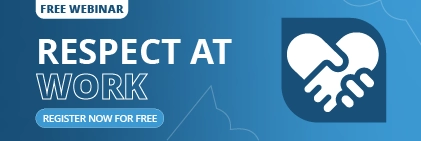There is a common theme across this workplace compliance series the best organisations have a robust workplace compliance system in place. One that educates their staff and delivers policies and procedures to help people know what to do if there is a fair work, privacy or health and safety incident in the workplace.
Education is the key.
The best organisations recognise that education around things such as work health and safety (WHS), privacy, workplace bullying, sexual harassment, equal employment opportunity (EEO), and the appropriate use of internet and social media are all necessary so that everyone is able to identify what appropriate behaviour and inappropriate behaviour in the workplace is.
Education is not just a one-off when somebody starts in the organisation, a water cooler conversation or references made on page 27 of an employee handbook. But rather an ongoing and deliberate commitment from the leadership team, managers and supervisors across the organisation to deliver formal training and refresher training, accompanied by ongoing mentoring and guidance as to what behaviour is required from everyone to ensure a safe workplace where people are treated fairly and with respect.
One of the biggest mistakes an organisation can make is to think that an employee handbook or a workplace policy on an important matter, such as workplace bullying, is adequate.
Employee handbooks and policies are a start, but they are not enough. Not enough in the eyes of the law and certainly not enough when it comes to best practice education for employees within your organisation.
That is why the best organisations address the education piece. They want their people to understand what appropriate behaviour looks like. They similarly want their people to identify if inappropriate behaviour is taking place and how to report this. Only once something is reported can it be resolved.
The best organisations recognise that when people are safe, they can do their best work, and when they do their best work, by default, the customer is happy, resulting in greater shareholder returns.
Yes, a policy and procedure can provide us with definitions and a guide to reporting incidents as well as the resolution process.
Unfortunately, far too many organisations have not taken the time to educate their staff in the first place as to what appropriate behaviour should look like. So next time you are thinking about workplace compliance training as just another cost to your business, please stop and think.
What would a great leader do?
What would a highly engaged business do?
Yes, that’s right; they would see education in regard to workplace relations and safety matters as an investment, not a cost, just like any other form of professional development.
The best organisations see education on human rights to be an investment and not a cost of doing business to adhere to compliance or meet their legal obligations.
And of course, education is not just limited to individuals knowing how to identify and report incidents of bullying, harassment or discrimination. Rather, managers/supervisors should know how to deal with such reports and can support all parties to come to an appropriate resolution.
Yes, it’s part education and policies and part leaders treating an incident, if there is one, in a way that aligns with a culture that promotes a safe, fair and appropriate workplace.





